Editorial: Tesla is What Scion Should Have Been

It’s not an exceptionally large showroom, but the façade is enormous. The Tesla retail store in Columbus, Ohio wraps around an entire corner of the Easton Town Center, that city’s premier upscale shopping venue. My trip to the store, the first time I’d ever set foot in a Tesla retail location, was an eye opener. Tesla’s retail model is an example of what Scion could have (and should have) been.
Tesla’s presence at Easton is inextricably interwoven with the history of American retailing. Easton is the brainchild of L Brands founder and CEO Les Wexner, who has overseen the growth of some of the country’s biggest names in retail: Victoria’s Secret, Abercrombie and Fitch, Bath and Body Works, Lane Bryant, and many others. Easton opened for business in 1999, as part of the new wave of American retail venues that appeared in the late 90s and early 00s. These were indoor-outdoor hybrids, replete with restaurants, entertainment venues, and other “lifestyle” amenities. Consumer response to these new options was strong, and today Easton is still one of the state’s most successful retail development projects.
Easton’s rise was directly linked to the decline of traditional malls. Northland, Eastland, and Westland were opened in the 60s to serve customers in and around the Columbus metro area. Of the three, only Eastland is still in operation, and it’s currently for sale. De-urbanization and the general decline of Columbus’ old neighborhoods near the city’s core hurt these malls, but they were also undermined by changing customer expectations. When Easton opened (as well as the copycat Polaris Fashion Place developed by the rival Glimcher development group), it suddenly made the indoor malls seem like relics of a bygone era. Easton had anchor department stores like Macy’s, a movie theater, some indoor small shops, and other features that traditional mall customers expected. But it also had bars, quality restaurants, a children’s park, and even a luxury grocery store. It also had a myriad number of high-end standalone retailers that were previously only to be found in exclusive locations in big cities: Lacoste, Tiffany’s, Louis Vuitton, Coach, and many others.
Eastland and the other traditional malls didn’t need these kinds of retailers to satisfy the basic demands of their traditional customers. But what the luxury brands did was give Easton a halo of respectability and posh refinement that itself was an object of consumer desire. Although there are plenty of rich people who shop at Easton, a $2500 handbag is well out of reach for most people who go to the mall. What Easton does is give the plebs the chance to rub shoulders with the moneyed set before sneaking into Macy’s to buy a $40 dress. Wexner’s decision to arrange most of the high-end stores along a single boulevard lined with metered parking was a stroke of genius. Every day the main thoroughfare is flanked by an ever-changing lineup of Benzes, BMWs, Porsches, and exotics. The other malls withered, and then crumbled. Northland Mall, just a few miles up the road, was torn down in 2004.
Now, Easton has a store that sells electric cars. It would be tempting to say that this store is unlike any that have come before it, but that isn’t really true. There’s a Model S in the middle, of course, as well as bodiless chassis buck. Otherwise, the Tesla location looks a lot like the other high-end retailers ringing Easton’s perimeter. Soothing but distinctly modern Muzak plays through the ceiling, and everything is brilliantly lit and tastefully furnished. There are a variety of slick technical displays explaining various features of the car, as well as options.
Most importantly, the walls are covered with logo merchandise of every type, shape, and description: t-shirts, coffee mugs, tin lunchboxes, baby onesies. All of this is overseen by Tesla personnel, in this case two young men. They were as fastidiously dressed and groomed as any Brooks Brothers employee, and had the manners of a really good sommelier at a high end restaurant: polite, unquestionably confident, and just easygoing enough to talk you into making a really expensive decision. Or, if you want to buy a $25 shirt, they’d be more than happy to help you with that too. What the Tesla location resembles is not so much a car dealership as the Puma store it replaced: a variety of premium branded goods, sold by handsome young people in a clean and upbeat atmosphere.
Contrast that with my last visit to a Scion daler, which was pretty representative of all the Scion dealers I’ve ever set foot in. The Scion display was in the corner of a much larger Toyota showroom, which was itself part of a large dealer group. It was constructed in the manner of virtually all large car dealers: a bunch of lots and showrooms in their own area, distinct from other retail outlets. The Scion display consisted of a single panel, which was filled with informational pamphlets. Half of these were for products that either no longer exist or are in some kind of planning limbo.
The other half were for the kind of cashback deals and financial incentives that can be found in any dealership anywhere. The only Scion in the showroom was an automatic xD, which was dusty and fingermarked. I fooled around with it for a good twenty minutes without anyone bothering me. I had a salesman on hand about thirty seconds after I started examining the new Corolla. There was some Scion logo merchandise, but it was in the parts department alongside all the overpriced windshield wiper blades and camo pattern trailer hitch covers. There was nothing that jumped out as edgy, different, or alternative. Certainly, there was nothing to make you think you were anywhere but a car dealer.
It was pretty clear that nobody much cared about the Scion side of the dealership, and why should they? People don’t come to Toyota dealers looking for Scions, they come looking for Toyotas. Scion will never be much more than a distraction for the salespeople, who are much more invested in selling Camrys, Corollas, Rav-4s and Tundras. At this point, most Scion sales are either to the limited number of enthusiasts buying FR-S’s, or people who were disappointed to find out that the Corolla doesn’t come in hatchback form anymore and decided to settle for something else instead. Scion urgently needs new product, but it also needs a complete overhaul of the buying experience. The traditional dealership format is completely inimical to accomplishing the stated goals of the Scion brand: attracting a younger clientele to Toyota products, while modifying the traditional dealer experience.
The history of retail is a stream of constant reinvention. Every generation has contributed some important innovation to the backbone of the consumer economy. Online shopping is perhaps the most relevant current example of this trend, but brick-and-mortar stores have been reinventing themselves too. Walmart wiped out many smaller grocery chains, as well as traditional department stores. But it failed to steamroller the entire grocery market because it became synonymous with lower-end retail. Publix, Target, Kroger, and other chains have hung on by offering a more pleasant shopping experience and a better selection of higher-end goods.
Similarly, Easton represents a way of reinventing retail to better serve the needs of a modern, affluent clientele. Tesla, with its direct sales model and glimmer of luxury branding, represents a perfect fit for Easton’s retail model. It’s a brick-and-mortar store, but one with a distinctly modern feel. And although its main product is out of reach for the majority of Easton’s customer base, it still offers other ways to capture some of that Tesla magic. The Tesla showroom is a constant parade of gawkers, most of whom come away distinctly impressed by what they’ve seen. This is ground zero for building a brand, and Tesla is hitting it out of the ballpark. Why can’t Toyota emulate this model for Scion?
The answer, of course, is that Toyota isn’t in any position to disrupt the market in such a way. They are firmly a part of the American automotive Establishment, just as much as any of the Big Three. Their franchise dealers are their lifeblood, and are responsible for much of their American success. Setting Scion up as a direct sales operation would have required throwing these dealers under the bus, as well as a massive legal campaign with no guarantee of success. In short, it would be an incredibly foolhardy move, and it’s no surprise that Toyota eschewed it in favor of following the established model. This meant, though, that Toyota missed the opportunity to do something really revolutionary with the brand, or at least make it seem revolutionary.
When GM launched Saturn, there was nothing on paper that made the dealership model seem any different from previous ventures. However, the focus on customer service and satisfaction was such a revelation that even import brands were caught off guard. Toyota didn’t try to shake up the dealer experience with Scion, besides some milquetoast moves towards customization and fixed pricing. Instead, Scion was just another car brand from the get-go. The unapologetic functionality of the first generation xB, and the promise of an Eclipse with Toyota reliability undergirding the tC, were enough to pull in a decent number of early adopters. After that, the brand languished. Scion didn’t damage Toyota’s fortunes, because the product wasn’t shoddy or defective (for the most part). The brand underperformed, however, because it did not deviate from the norm of American auto sales in any meaningful way. For a brand supposed to be based on youthful rebellion and nonconformity, that was the kiss of death.
It may be too late now to salvage the Scion brand. And if Toyota decides to pull the plug on the FR-S at the end of this generation, it may be that the company won’t keep Scion around anyway. Even so, I believe I have a workable proposal for reversing Scion’s fortunes, at least on the marketing front. Take some of the money that’s being wasted on FR-S TV commercials and use it to open some storefront locations in prime shopping areas.
Let these be places where potential customers can get a feel for the product in a non-traditional setting. Put two or three cars in the showroom, and let a few employees explain their features and options. Give customers the opportunity for a test drive, if that’s workable in a given location. When somebody wants to buy, use the power of that newfangled Internet thing to match customers up with locally available inventory. In short, keep Scion customers out of the arms of dealers until the last possible moment. Use the stores as merchandising fronts for the Scion AV music venture. Be like Tesla, and offer copious merchandising opportunities all along the way. If you’re serious about turning Scion into a “movement,” then provide the means for that to happen. Dealers and a few sponsored events aren’t going to do it for you. Keep the franchisees around for their service and sales infrastructure, but don’t rely on them to market Scion for you. You don’t need to sell six-figure electric cars to create buzz. You just need some good product, presented in a relevant and novel fashion. That alone will buy you a lot of credit with the disaffected youth of today’s marketplace.

More by J.Emerson
Latest Car Reviews
Read moreLatest Product Reviews
Read moreRecent Comments
- ToolGuy 9 miles a day for 20 years. You didn't drive it, why should I? 😉
- Brian Uchida Laguna Seca, corkscrew, (drying track off in rental car prior to Superbike test session), at speed - turn 9 big Willow Springs racing a motorcycle,- at greater speed (but riding shotgun) - The Carrousel at Sears Point in a 1981 PA9 Osella 2 litre FIA racer with Eddie Lawson at the wheel! (apologies for not being brief!)
- Mister It wasn't helped any by the horrible fuel economy for what it was... something like 22mpg city, iirc.
- Lorenzo I shop for all-season tires that have good wet and dry pavement grip and use them year-round. Nothing works on black ice, and I stopped driving in snow long ago - I'll wait until the streets and highways are plowed, when all-seasons are good enough. After all, I don't live in Canada or deep in the snow zone.
- FormerFF I’m in Atlanta. The summers go on in April and come off in October. I have a Cayman that stays on summer tires year round and gets driven on winter days when the temperature gets above 45 F and it’s dry, which is usually at least once a week.









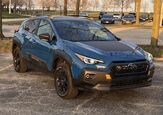








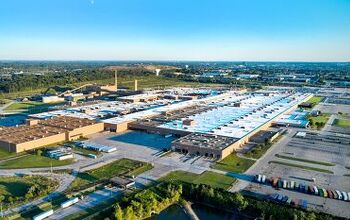
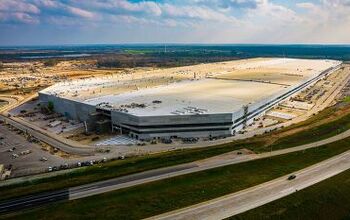
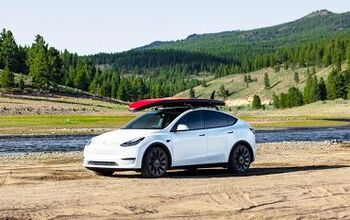
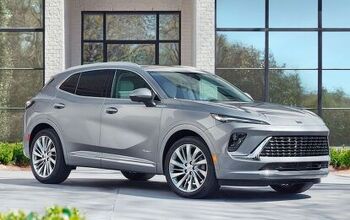

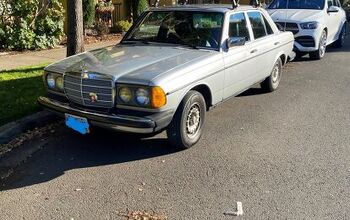

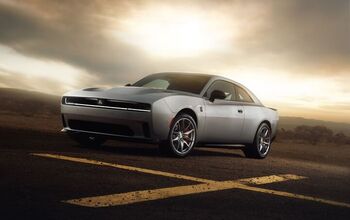
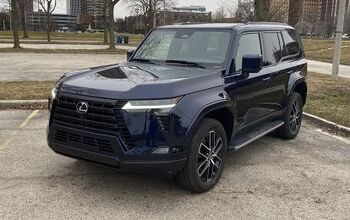
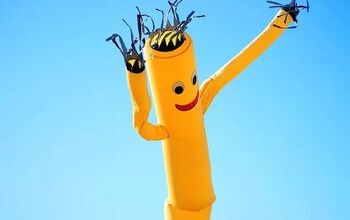
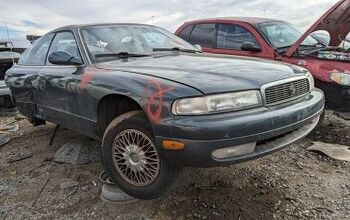

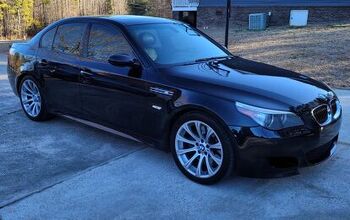
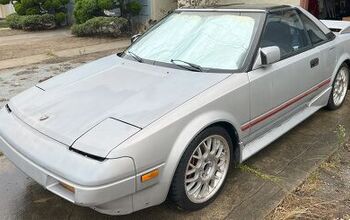
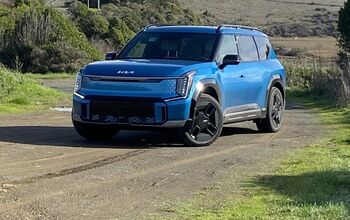
Comments
Join the conversation
I'm not sure I've ever felt dumber for just having read a headline before.
Scion screwed up with the gen 2 product mix. The g2 xB was an unmitigated disaster and the xD is completely fugly regardless of who you are. If they'd have simply up-equipped something more like the original xB and offered a plug-in hybrid option (hell - the Prius C should have been the xC), we'd be talking about how they're selling the cars of tomorrow today.